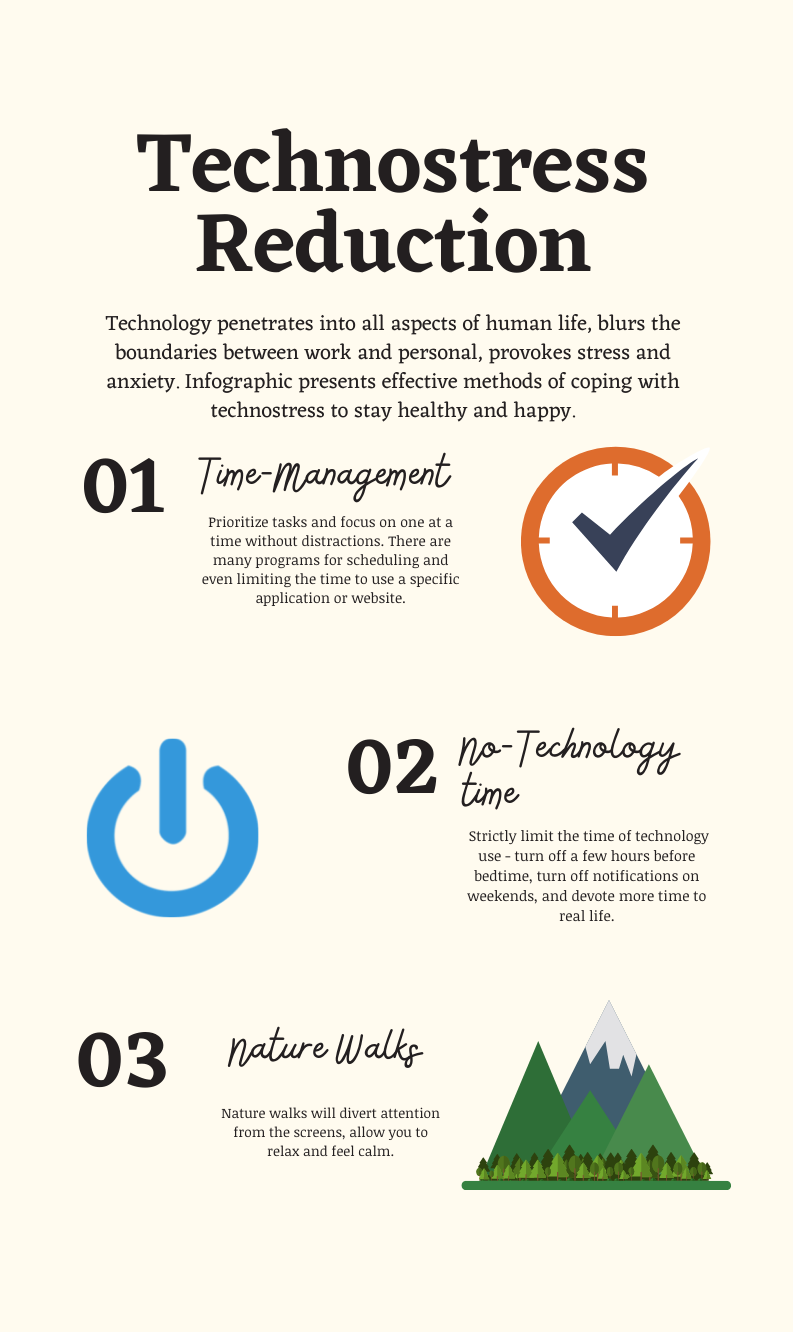
In current conditions, technostress management becomes an essential skill for maintaining human health. Technostress refers to the difficulties people have trying to use information technology in a healthy manner (Lee, 2016). It is caused by the rapid development of technology and the strong influence on the human lifestyle, particularly on health. As a result, people experience information overload, and media addictions, and cannot balance work and personal life. The infographic presented above describes methods that can be effective in coping with technostress.
The following methods are only a few of the possible approaches, and their choice is determined individually:
- Time-management: Technology supports the myth of multi-tasking, but concentrating on several duties is exhausting and distracting. It is necessary to plan the order of tasks considering their priority and use gadgets accordingly for each of them. During a specific job, technologies should not distract, and one might want to disable mail notifications.
- No-technology time: The separation of personal time and job by turning off work accounts contributes to a better rest at home and concentration at the workplace (Crane, 2018). Moreover, a distraction from screens in personal time allows being calmer, as a person concentrates on their own thoughts and feelings and not on the information flow.
- Nature walks: Constant notifications and sputtering of attention create a sense of haste and increase anxiety. Time in nature allows for restoring a natural rhythm and relaxation (Tahmaseb-McConatha, 2019). Moreover, this method promotes stress resistance and improves people’s well-being.
Thus, in the modern world, the concept of technostress has appeared associated with the negative impact of information technologies on human health. As a result, it became necessary to learn to cope with it and develop many methods for this purpose. Approaches are better to choose individually, and then they will be more effective. The infographic presented in the paper discusses three ways of combating technostress: time management, time without technology, and nature walks.
References
Crane, B. (2018). Suffering from technostress at work? Read these tips. Web.
Lee, J. (2016). Habit, negative emotions, and intention to continue to use a cell phone. Social Behavior and Personality: An International Journal, 44(10), 1687–1697. Web.
Tahmaseb-McConatha, J. (2019). Coping with technostress: The healing power of nature and managing technostress [Blog post]. Web.